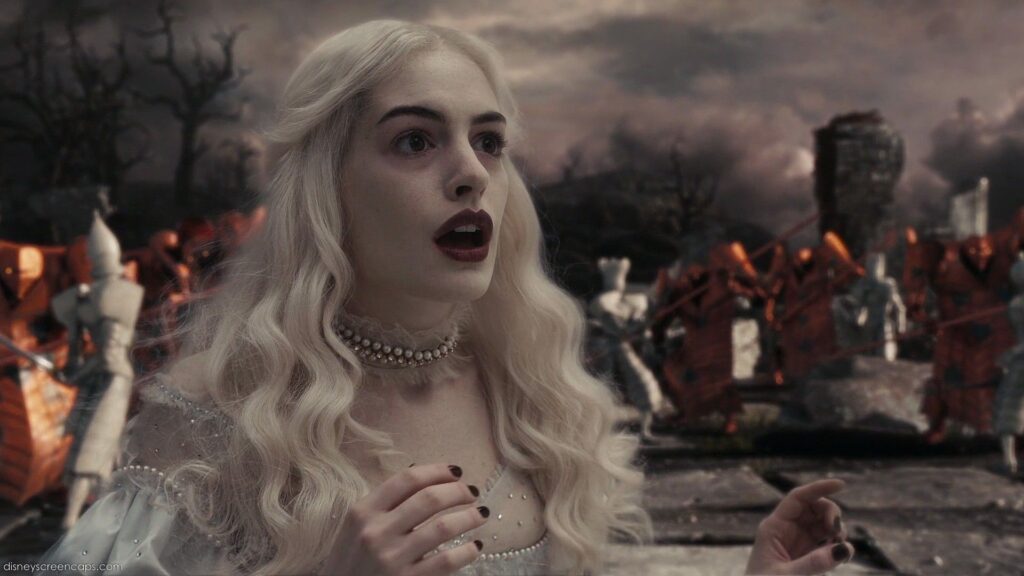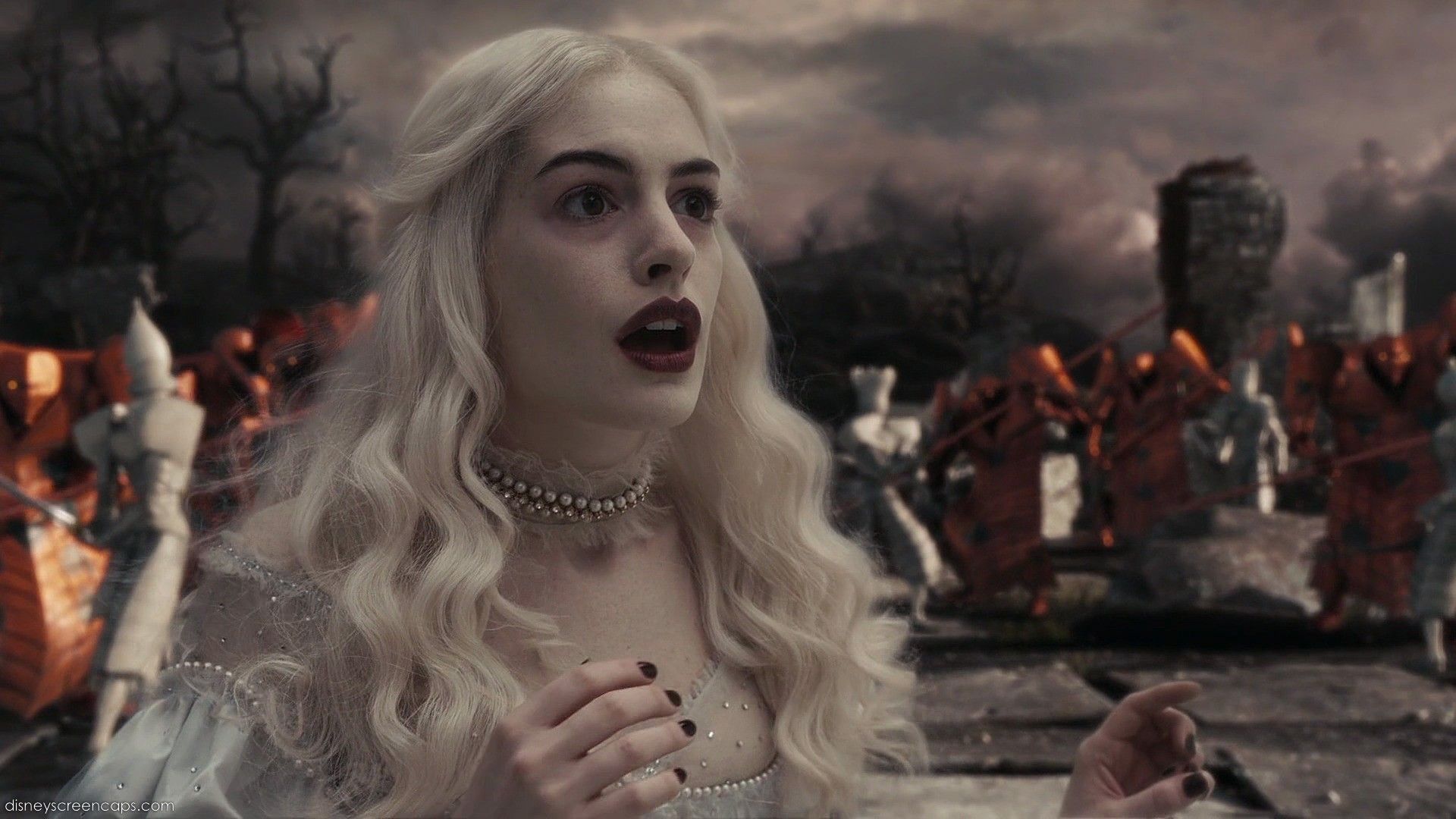
Who Was the White Queen in Alice in Wonderland? Exploring the Character and Her Origins
The White Queen, a prominent figure in Lewis Carroll’s enchanting world of Wonderland, is a character shrouded in mystique and often misunderstood. Understanding who the White Queen in Alice in Wonderland is requires delving into the complexities of her role in Through the Looking-Glass, the sequel to Alice’s Adventures in Wonderland. This article aims to explore the origins, character traits, and significance of the White Queen, offering a comprehensive look at this fascinating character.
The White Queen’s Introduction in Through the Looking-Glass
The White Queen makes her debut in Through the Looking-Glass, the second of Lewis Carroll’s Alice books. Unlike the Red Queen, who is based on a chess piece and embodies a more aggressive and tyrannical nature, the White Queen presents a somewhat gentler, albeit eccentric, demeanor. Alice encounters her within a life-sized chessboard landscape, navigating through a bizarre and logic-defying world. [See also: Exploring the Symbolism of Chess in Alice in Wonderland]
Character Traits and Peculiarities of the White Queen
One of the most striking aspects of the White Queen’s character is her inability to remember things before they happen. This backward-thinking quirk is a recurring theme in Through the Looking-Glass, emphasizing the topsy-turvy nature of Wonderland. She often asks Alice for help with seemingly simple tasks, only to forget what she needed assistance with moments later. This forgetfulness, however, doesn’t diminish her strategic importance within the chess game she inhabits.
The White Queen also displays a talent for transforming into various objects and creatures, a common characteristic among Wonderland’s inhabitants. She can morph into a sheep, sew with knitting needles, and even scold Alice for her lack of manners. These transformations highlight the fluid and unpredictable nature of reality within the Looking-Glass world.
The White Queen’s Role in the Chess Game
In the chess game that forms the framework of Through the Looking-Glass, the White Queen acts as a protector and guide for Alice, who begins the game as a white pawn. She provides Alice with cryptic advice and helps her navigate the challenges of the Looking-Glass world, ultimately assisting her in reaching the eighth square and becoming a queen herself. The White Queen’s presence is crucial to Alice’s progression through the game, representing a force of guidance and perhaps even a reflection of Alice’s own potential.
The White Queen vs. The Red Queen: A Comparative Analysis
The White Queen and the Red Queen are often compared and contrasted, representing different aspects of power and authority within Wonderland. While the Red Queen is known for her hot temper and demands for immediate obedience, the White Queen is more whimsical and philosophical. The Red Queen’s motto is “Off with their heads!”, signifying her impulsive and ruthless nature. The White Queen’s pronouncements, though often nonsensical, tend to be less threatening. The contrast between these two queens emphasizes the multifaceted nature of power and control within Carroll’s fantastical realm. [See also: The Red Queen Effect and Its Relevance to Alice in Wonderland]
Interpretations and Symbolism of the White Queen
The White Queen has been interpreted in various ways, often symbolizing different aspects of the human psyche or societal structures. Some critics see her as representing the rational mind, struggling to maintain order in a chaotic world. Others view her as a symbol of innocence and purity, contrasted with the Red Queen’s more worldly and cynical nature. Her ability to live in the past and future simultaneously can be seen as a metaphor for the complexities of time and perception. Ultimately, the White Queen’s symbolism is open to interpretation, reflecting the multifaceted nature of Carroll’s work.
The White Queen in Popular Culture
The White Queen has appeared in numerous adaptations of Alice in Wonderland, ranging from stage productions to film and television. In Disney’s animated version, she is a less prominent character, but in Tim Burton’s 2010 film, she is portrayed by Anne Hathaway as a more complex and morally ambiguous figure. Hathaway’s portrayal emphasizes the White Queen’s internal struggle between good and evil, adding a layer of depth to the character. Other notable portrayals include those in television miniseries and stage adaptations, each offering a unique interpretation of the White Queen’s persona.
Analyzing Anne Hathaway’s Portrayal of the White Queen
Anne Hathaway’s depiction of the White Queen in Tim Burton’s *Alice in Wonderland* (2010) and *Alice Through the Looking Glass* (2016) offers a significant departure from traditional interpretations. She is presented as Mirana, the younger sister of Iracebeth, the Red Queen. Hathaway portrays Mirana with a delicate, almost ethereal quality, emphasizing her commitment to goodness and light. However, this portrayal also hints at a repressed darker side, suggesting that her virtue is a conscious choice rather than an innate characteristic. This internal conflict adds depth and complexity to the character, making her more than just a simple embodiment of good. Her pale complexion, elaborate white gowns, and graceful movements contribute to her otherworldly appearance, further solidifying her image as the White Queen.
The White Queen’s Relationship with Alice
The relationship between the White Queen and Alice is complex and multifaceted. In *Through the Looking-Glass*, the White Queen acts as a guide and mentor to Alice, offering advice and assistance as she navigates the bizarre landscape. However, their interactions are often filled with nonsensical conversations and illogical scenarios, reflecting the surreal nature of Wonderland. The White Queen’s forgetfulness and eccentric behavior can be frustrating for Alice, but she ultimately proves to be a valuable ally. In later adaptations, such as Tim Burton’s films, the relationship between the two characters is further explored, with the White Queen becoming a more maternal and protective figure for Alice. Understanding their dynamic is key to appreciating the overall narrative of the Alice stories. The White Queen provides a sense of familiarity while still being a surreal character.
The Enduring Appeal of the White Queen
The White Queen remains a captivating character due to her unique blend of wisdom, eccentricity, and vulnerability. She embodies the paradoxical nature of Wonderland, where logic and reason are often turned on their head. Her ability to live in the past and future simultaneously challenges our understanding of time and perception, while her transformations and nonsensical pronouncements remind us to embrace the absurd. Whether she is portrayed as a benevolent guide or a morally ambiguous figure, the White Queen continues to fascinate and inspire audiences, solidifying her place as one of the most memorable characters in literary history. The White Queen offers a unique perspective on reality and the power of imagination, making her a timeless figure.
Conclusion: Appreciating the White Queen’s Significance
In conclusion, the White Queen in Alice in Wonderland is a multifaceted character whose significance extends beyond her role in the chess game of Through the Looking-Glass. Her peculiar traits, symbolic interpretations, and enduring presence in popular culture make her a fascinating subject of study. Understanding who the White Queen in Alice in Wonderland is requires appreciating her complexities and recognizing her contributions to the rich tapestry of Carroll’s imaginative world. The White Queen truly embodies the essence of Wonderland itself. Her wisdom and eccentricities make her a unique figure.

